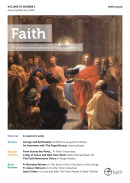Book Review: Newman's humanity and holiness
Reviews by James Tolhurst
For most Catholics, Cardinal Newman is known as the author of two familiar hymns and of scholarly theological works, who lived a long way from London. It is no accident that the two miracles necessary for his canonization came not from England but from America. And that is the point. He is known and specially appreciated by those who live in the area of the West Midlands centred on Birmingham which Newman chose as his pied á terre. Fr Peter Conley lives there and has made the study of Newman what Archbishop Longley terms in his foreword, ‘his keen interest’.
In his short Newman, A Human Harp of Many Chords Conley uncovers those aspects of Cardinal Newman’s life that you would need to ferret out of the Letters and Diaries (there are 32 volumes) and the assorted reminiscences of his colleagues and friends, which he has painstakingly done for you.
Billiards
We could take out of them a picture of Newman as an author in his library, working out his next book. Instead, we meet him riding his horses, playing his violin, selling one of his books ‘dirt cheap’ and saying, ‘I am as sick on penmanship as a pastry cook of tarts.’ Conley reminds us that Newman was very practical and good with money, enabling him to set up a school and found a university. He points out how he was partial to curry powder, bought barley sugar and almond cakes and talked of his fellowship at Trinity ‘like being mashed up into a great pudding.’ When on holiday, he wore his worst things and carried three novels under his arm. He learnt to play billiards and bought a ‘top notch’ table for his Dublin students, which raised clerical eyebrows, and shared local interest in cricket.
No hermit
But above all Newman was continually entering into contact with people. He rivals Augustine in his correspondence and his friendships. He wrote to statesmen and tradesmen, nuns and governesses, seminarians and bishops, architects and lawyers, novelists and poets. His pen was scratching away for hours each day. But he followed up his letters by helping out financially and socially (he intervened with the Cadburys when he was 88 – in a snowstorm – to exempt Catholic parishioners from Quaker services). He was certainly no hermit wrapped up in his own thoughts.
Conley gives us all this with a good ration of Birmingham scenery and quotations from Pope Benedict, YouCat and Pope Francis’ Laudato Si, as well as excerpts from many of Newman’s own writings (I would have liked an index). One excerpt sums it all up ‘When a saint converses with me, I am conscious of the presence of one active principle of thought.’ Conley knows his saint and brings him to life for us.
Newman and holiness
Germany used to produce Newman symposia; now the USA has taken up the baton. Heart Speaks to Heart - St John Henry Newman and the Call to Holiness contains some of the lectures of Newman scholars in at a symposium in St Joseph’s Seminary, New York, in November 2019 to mark Newman’s canonization and ‘dedicated to Newman’s sainthood and his conception of humanity’s vocation to sanctity’.
Bishop James Massa argues that ‘We need Newman more than ever, both the person and his work, in our efforts to form future clergy and lay faithful who can be instruments of sanctification and embodiments of the holiness without which “no one can see God.”’ In his lecture Cardinal Timothy Dolan says that, for Newman, ‘to make sinful creatures holy was “the great end which Our Lord had in view in taking on our human nature” …Consequently Newman established holiness and calling others to it as among the central themes of his life, preaching and writings.’
Balance, sin and mercy
Ian Ker’s contribution argues that Newman provides a balanced interpretation of Vatican II as he did with Vatican I, not supporting extremists then, and says that Newman would argue now for a correct understanding of the place for ecclesial communities – the New Movements – as well as popular devotions and also the sacrament of Penance. Ryan Marr’s interesting lecture is on the balance between sin and mercy. He points out that Newman put an emphasis on the severity of sin and ‘the counterfeit understanding of divine mercy’ in the case of admitting sinners to the Eucharist and allowing co-habitation or remarriage and the divergent pastoral guidelines in this respect.
Jo Anne Cammarata Sylva, from a Sicilian perspective, sees the impact of Italy on Newman, both his first visit in 1832 and his year in Rome following his reception into the Church. Other lectures deal with Newman’s theological-pastoral mystagogy and his apologetics and contrast his view of sanctity with that of Wilfrid Ward.
One hopes that the symposium’s intention that it ‘would serve as an inspiration to the Seminary community and also to the wider Church’ will be borne out; but perhaps appreciating Newman’s humanity, as Fr Conley has given us, would also help seminarians take Newman as a role model.
Fr James Tolhurst DD is the General Editor of the ongoing Millennium Edition of the works of John Henry Newman, published by Gracewing; he has edited five of the Edition’s volumes and written numerous other books on Newman.






